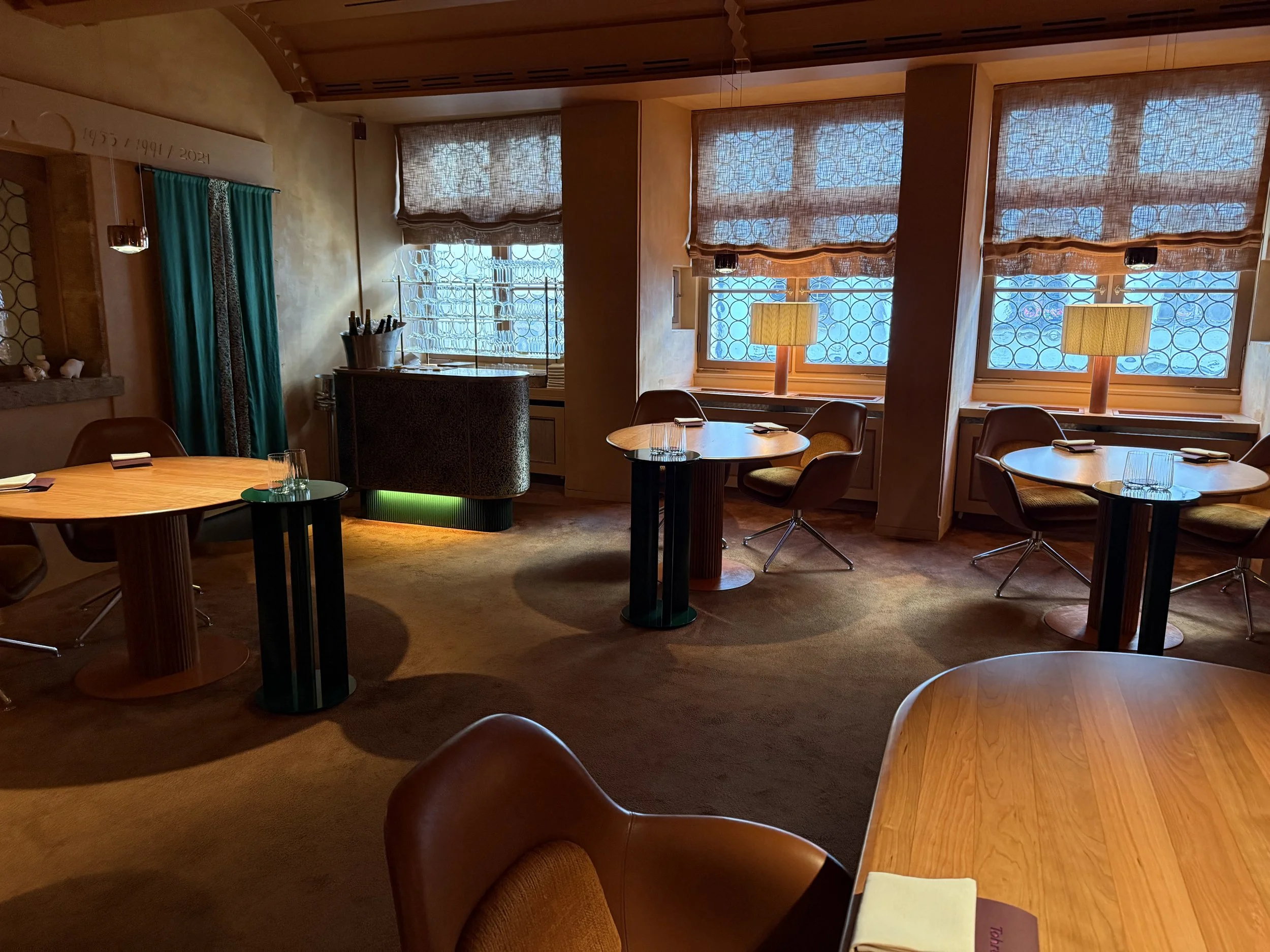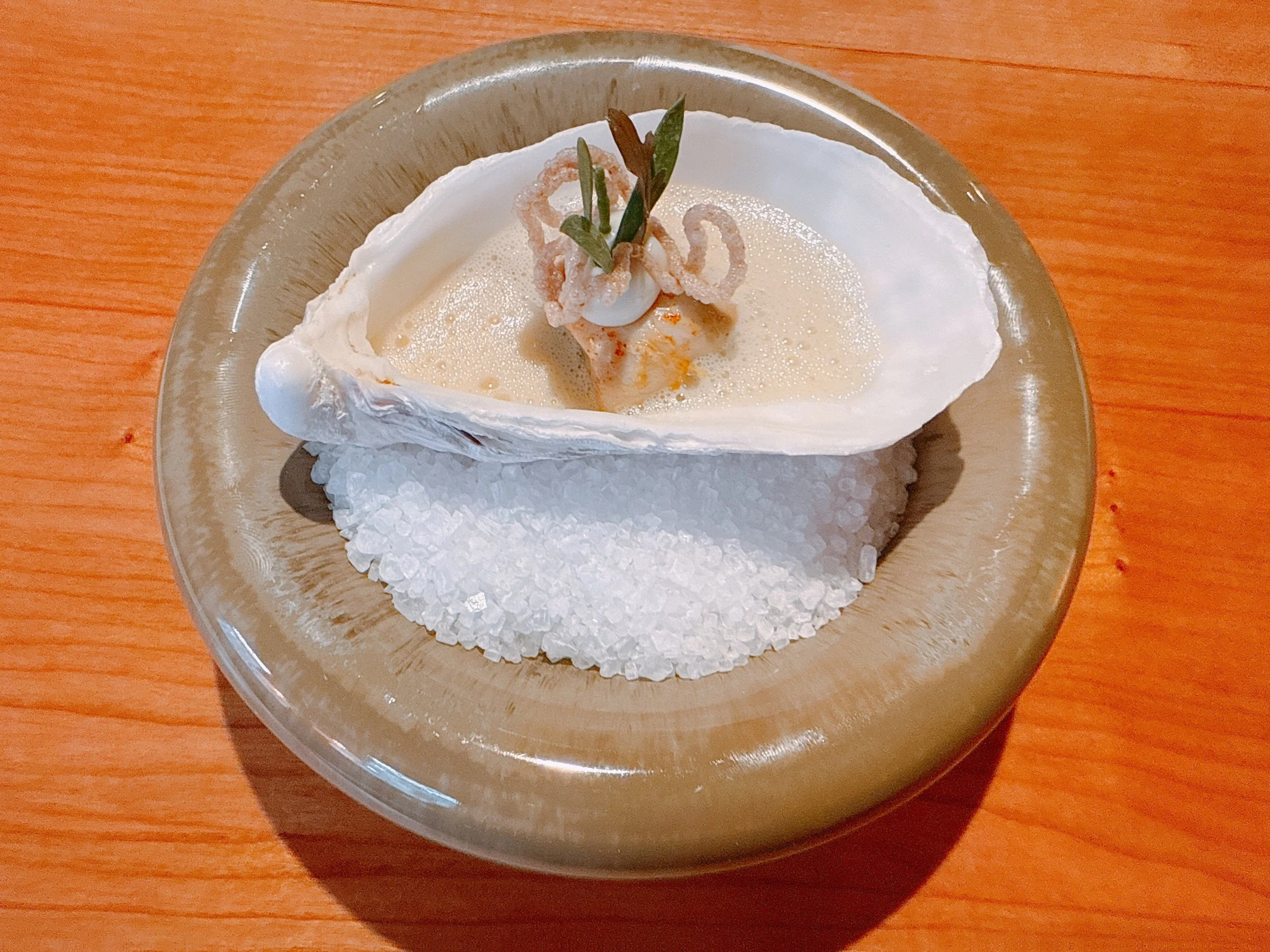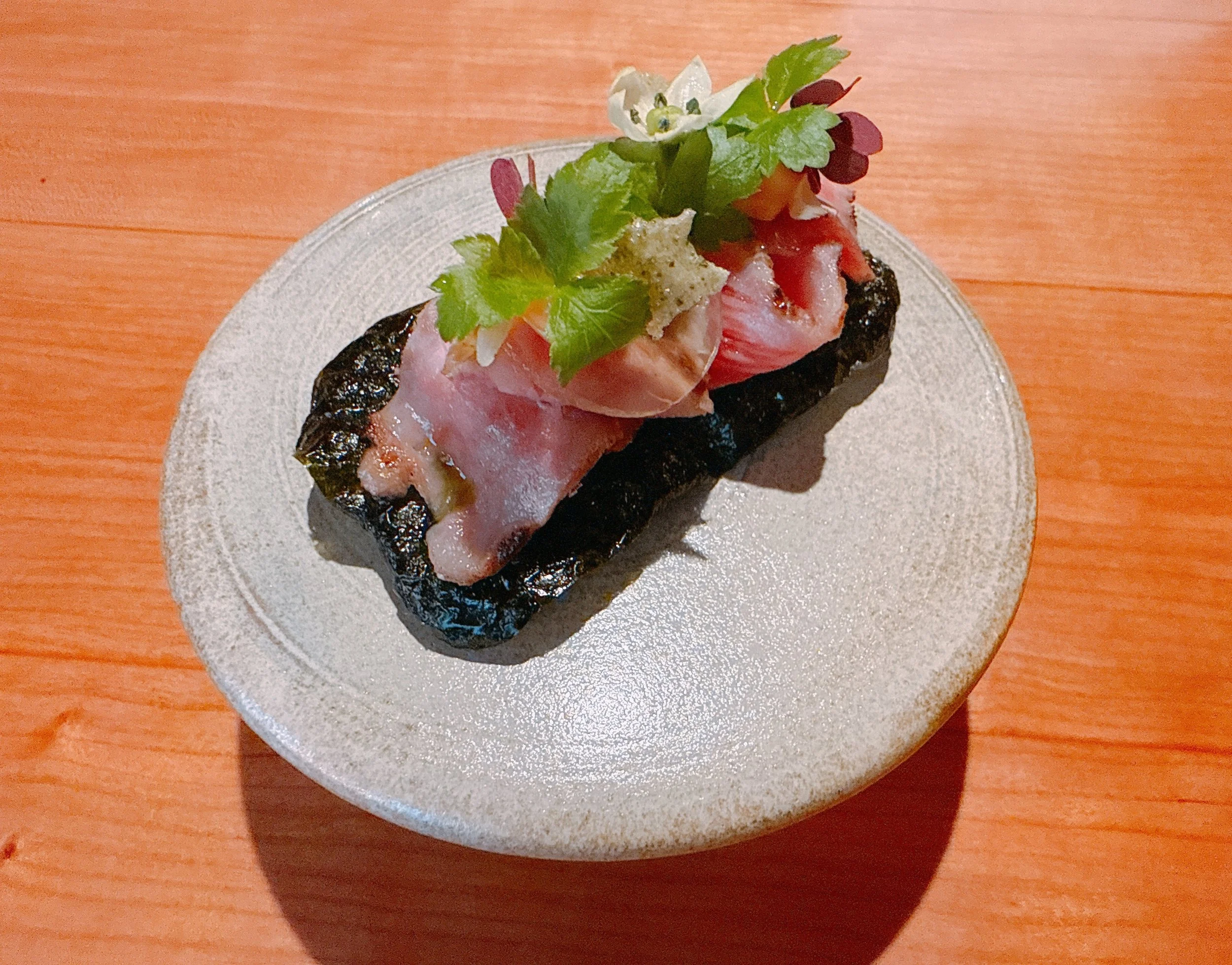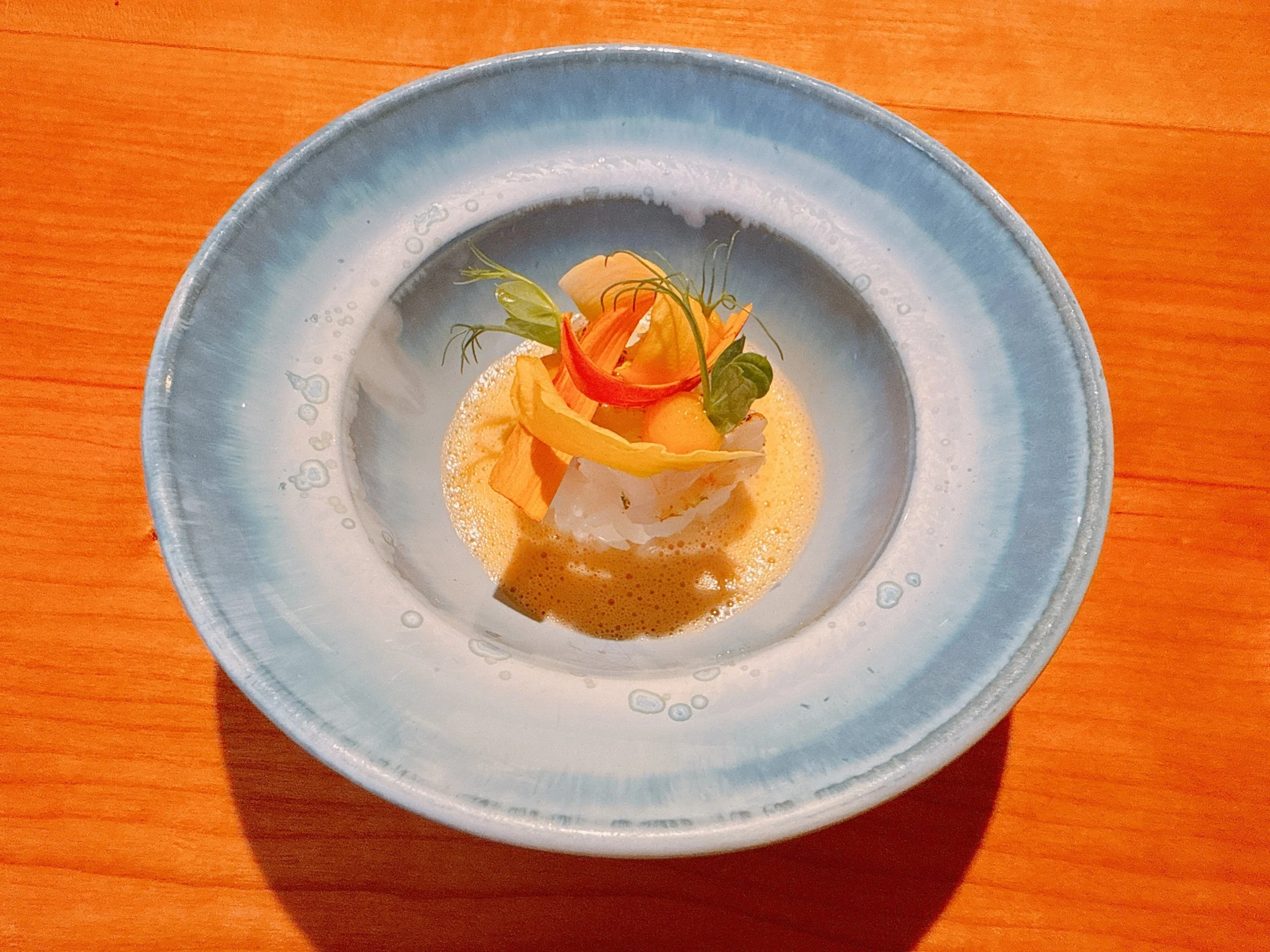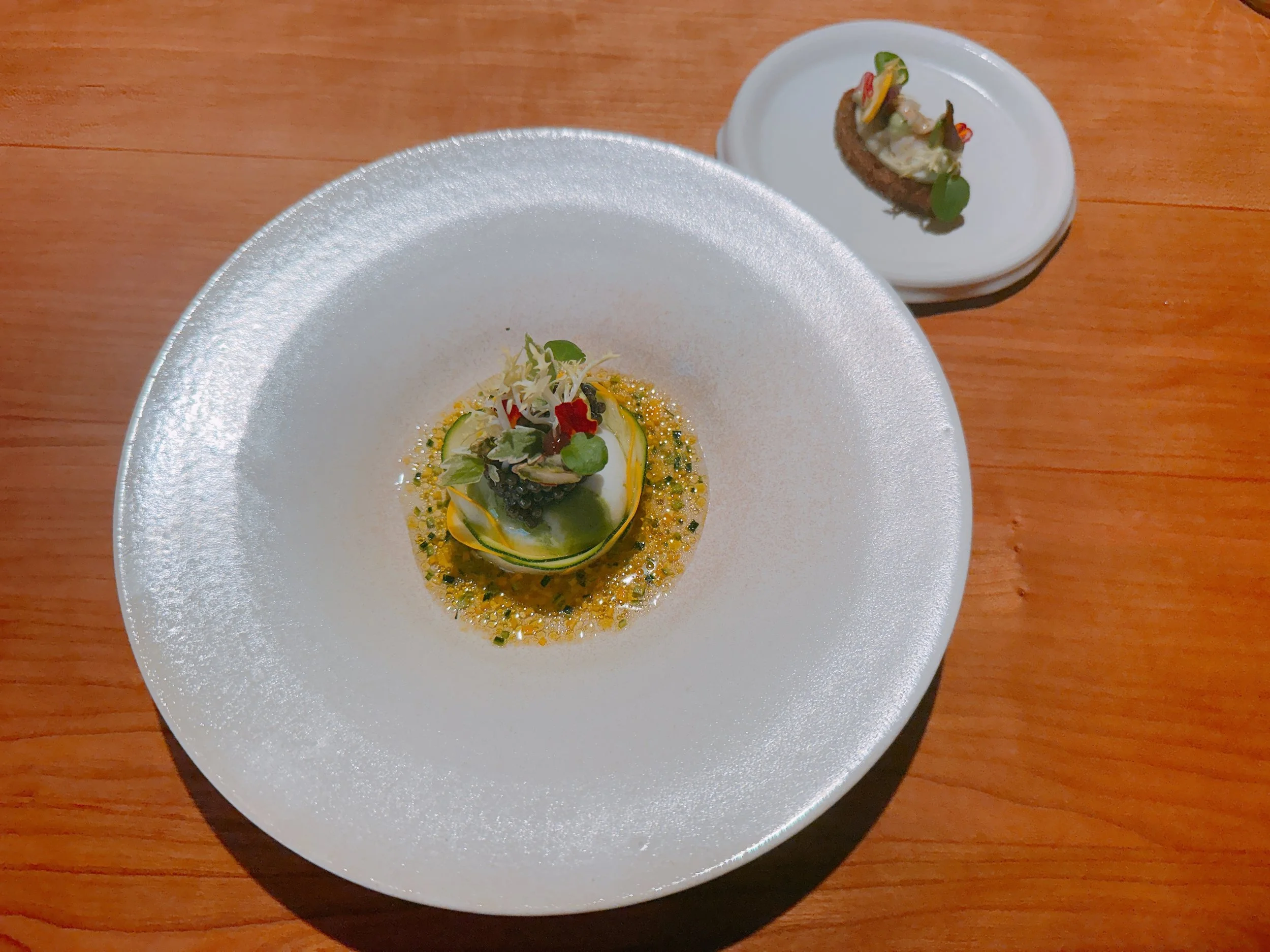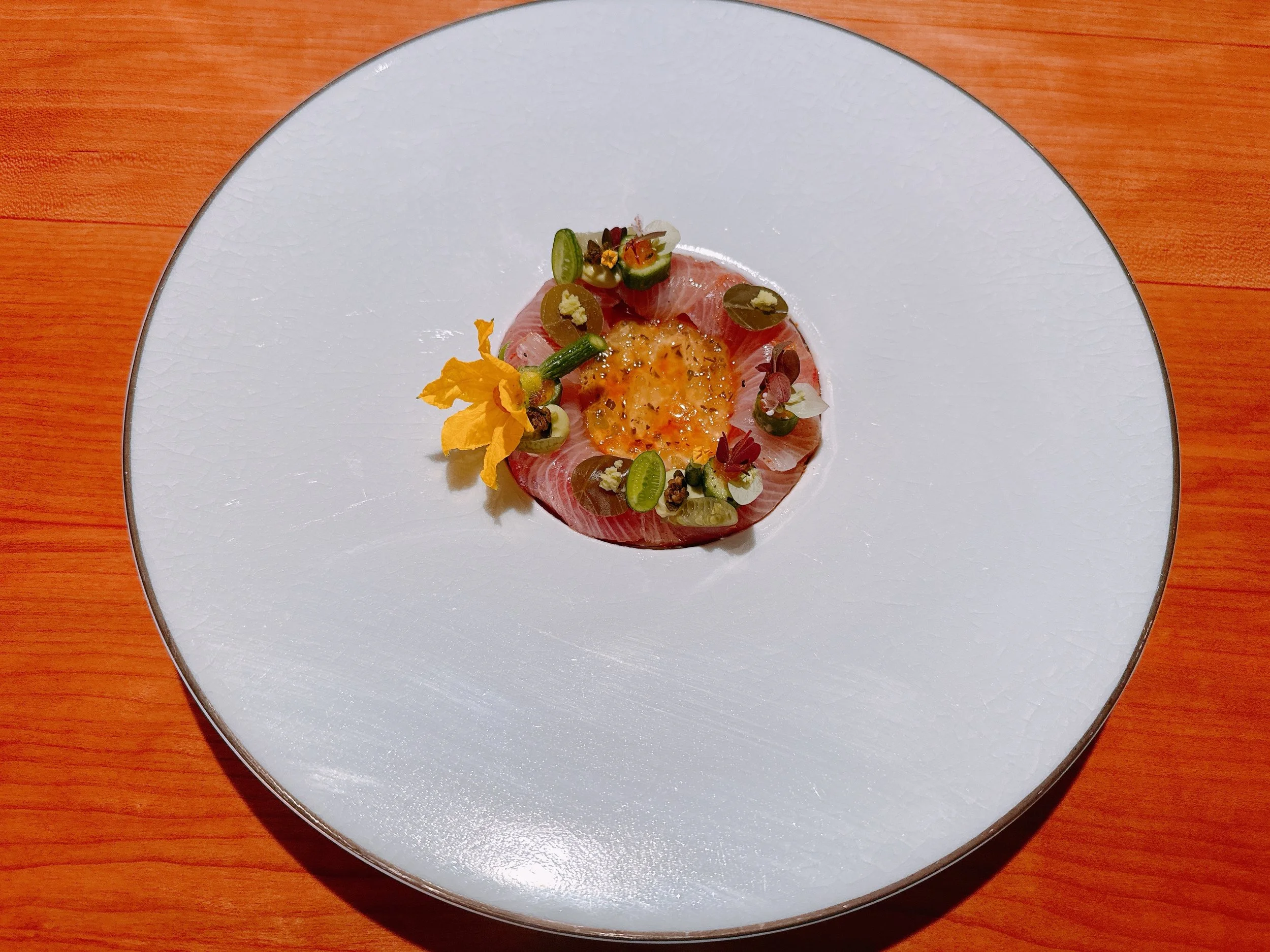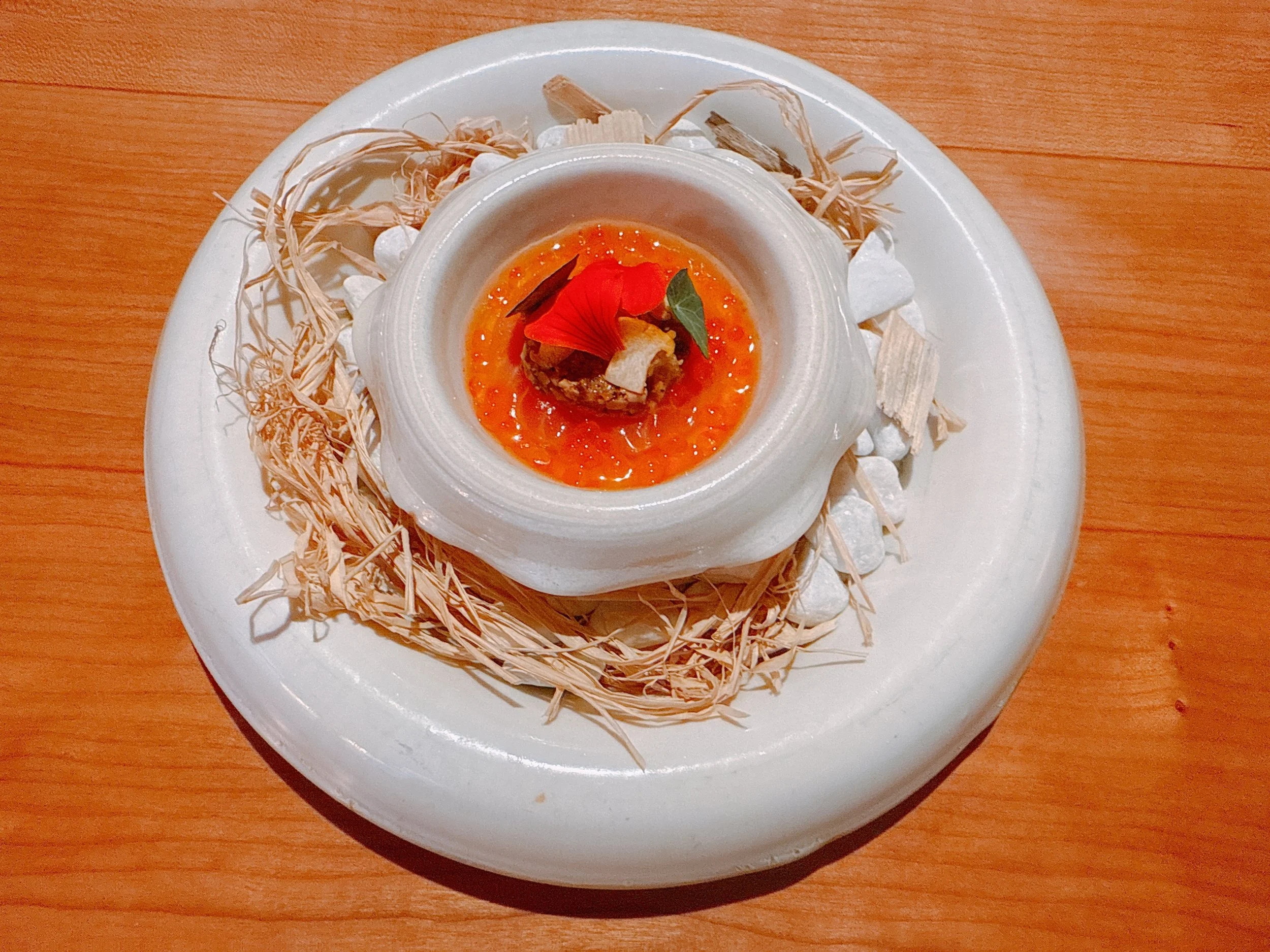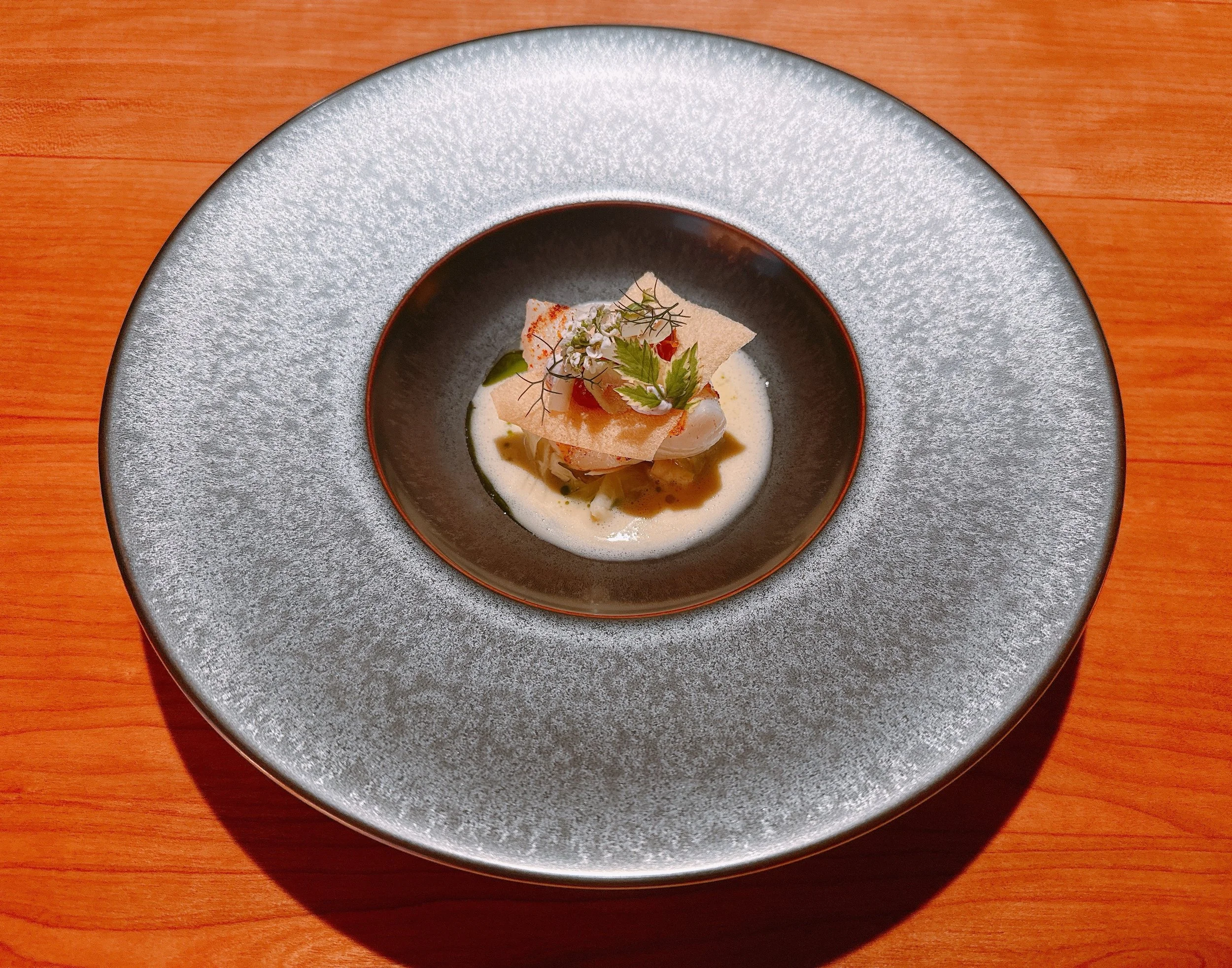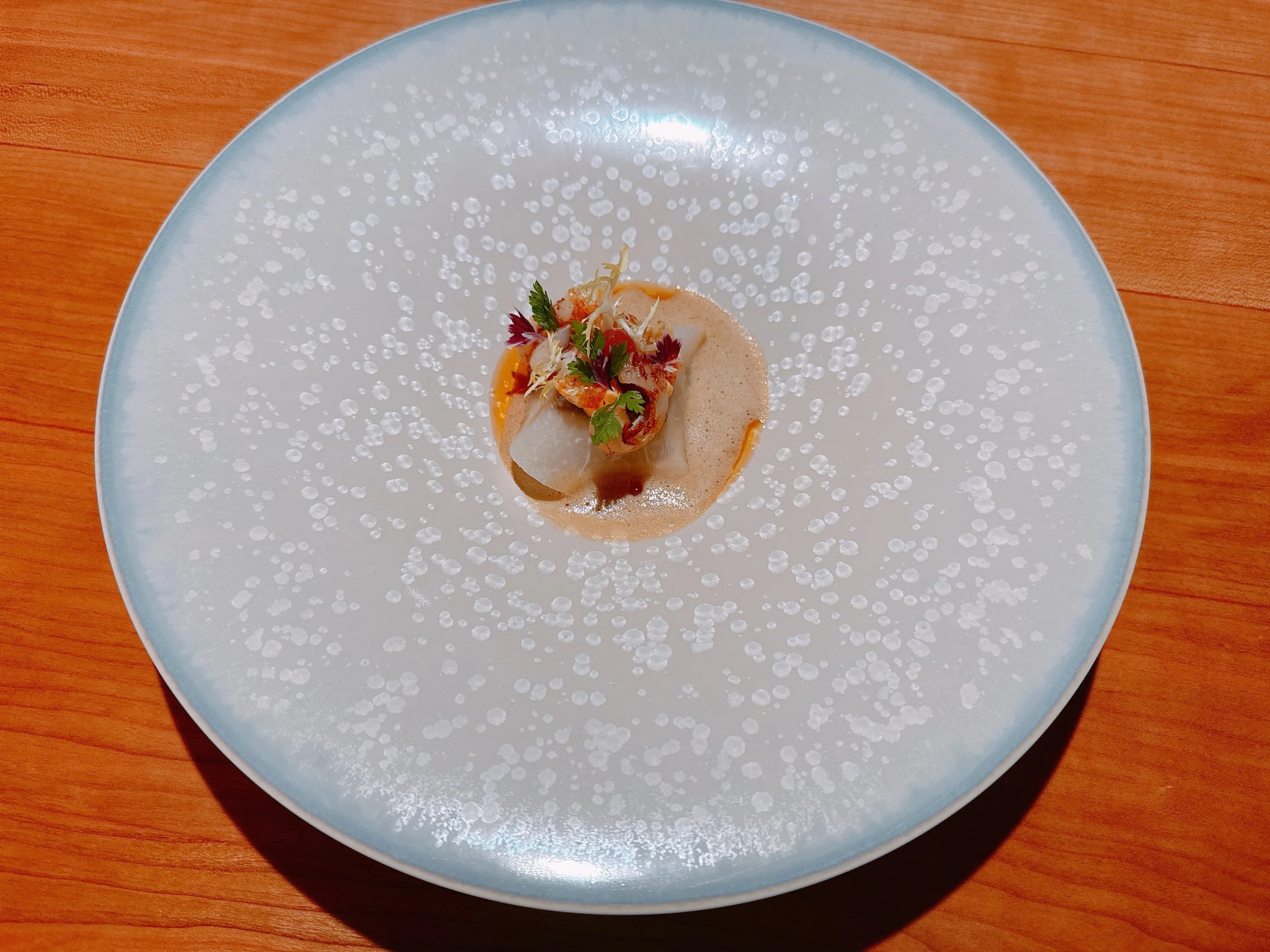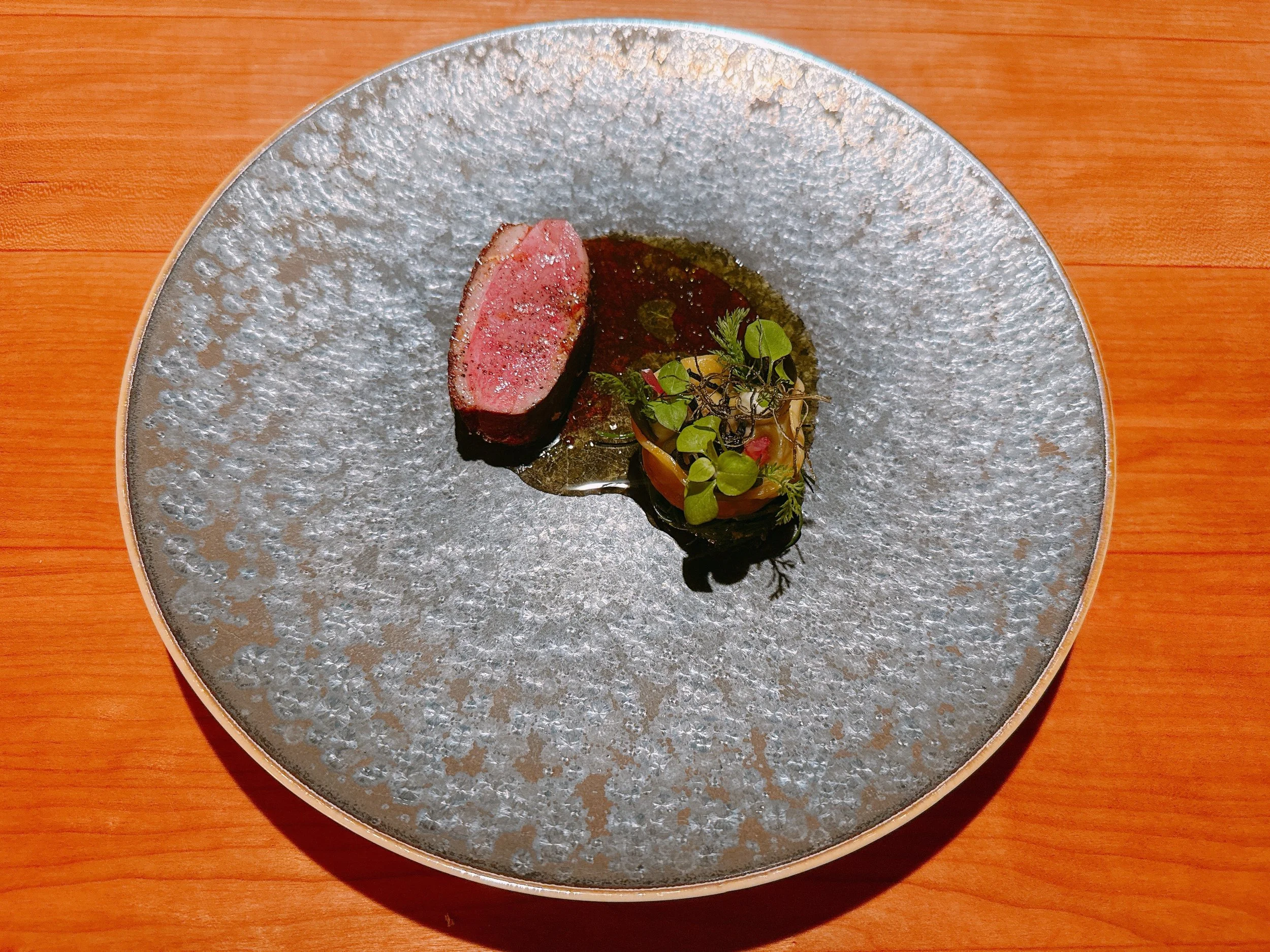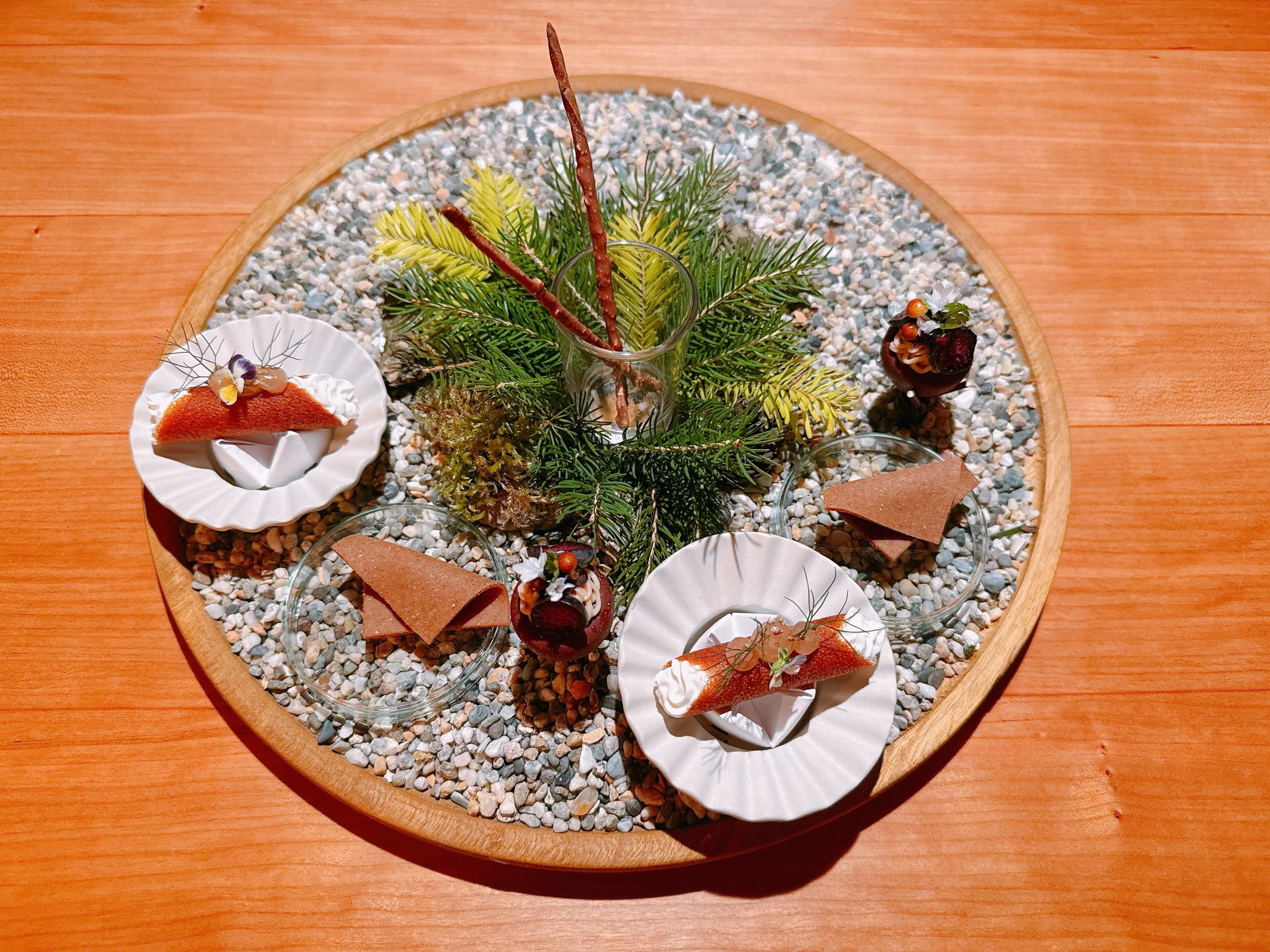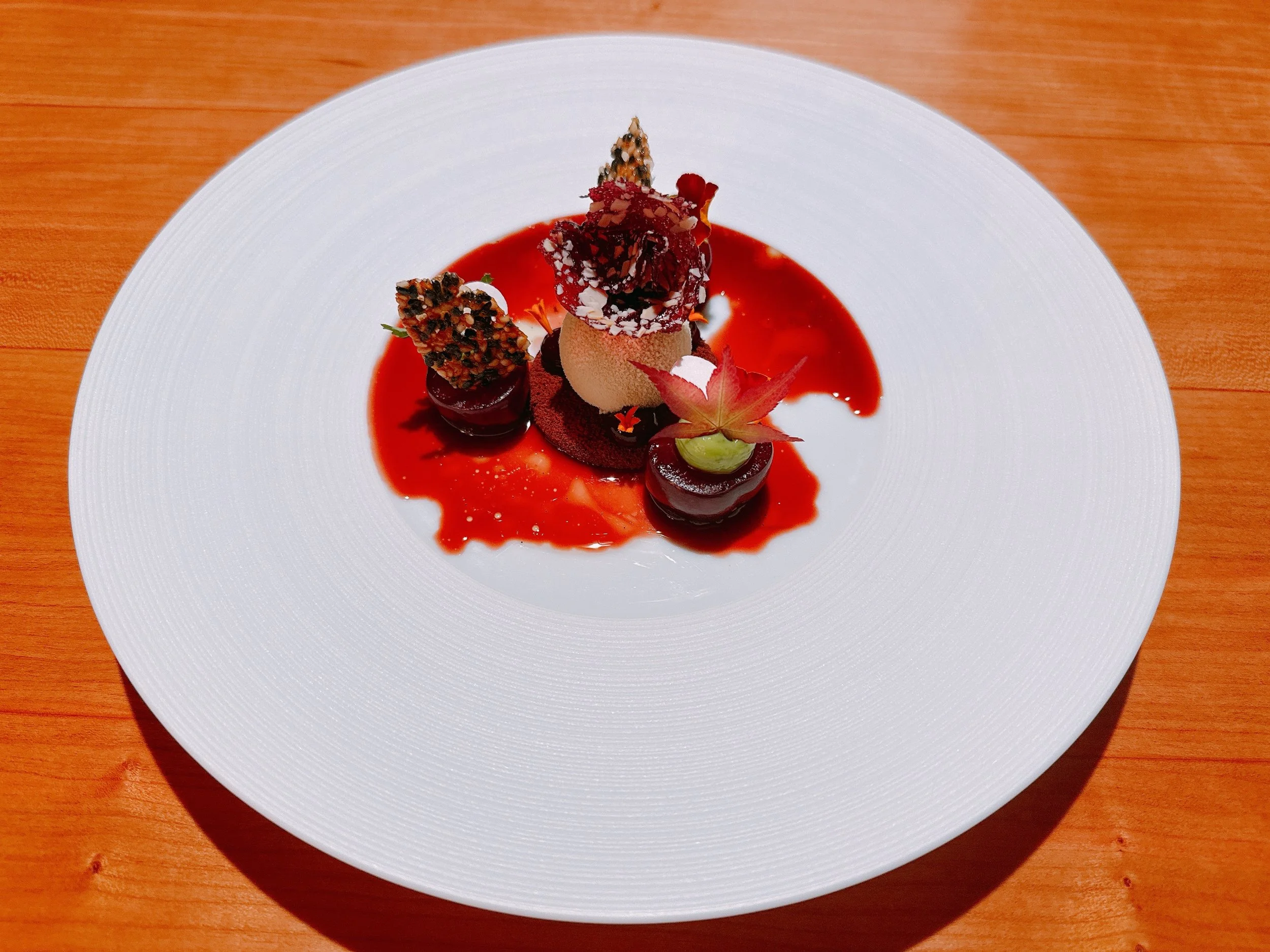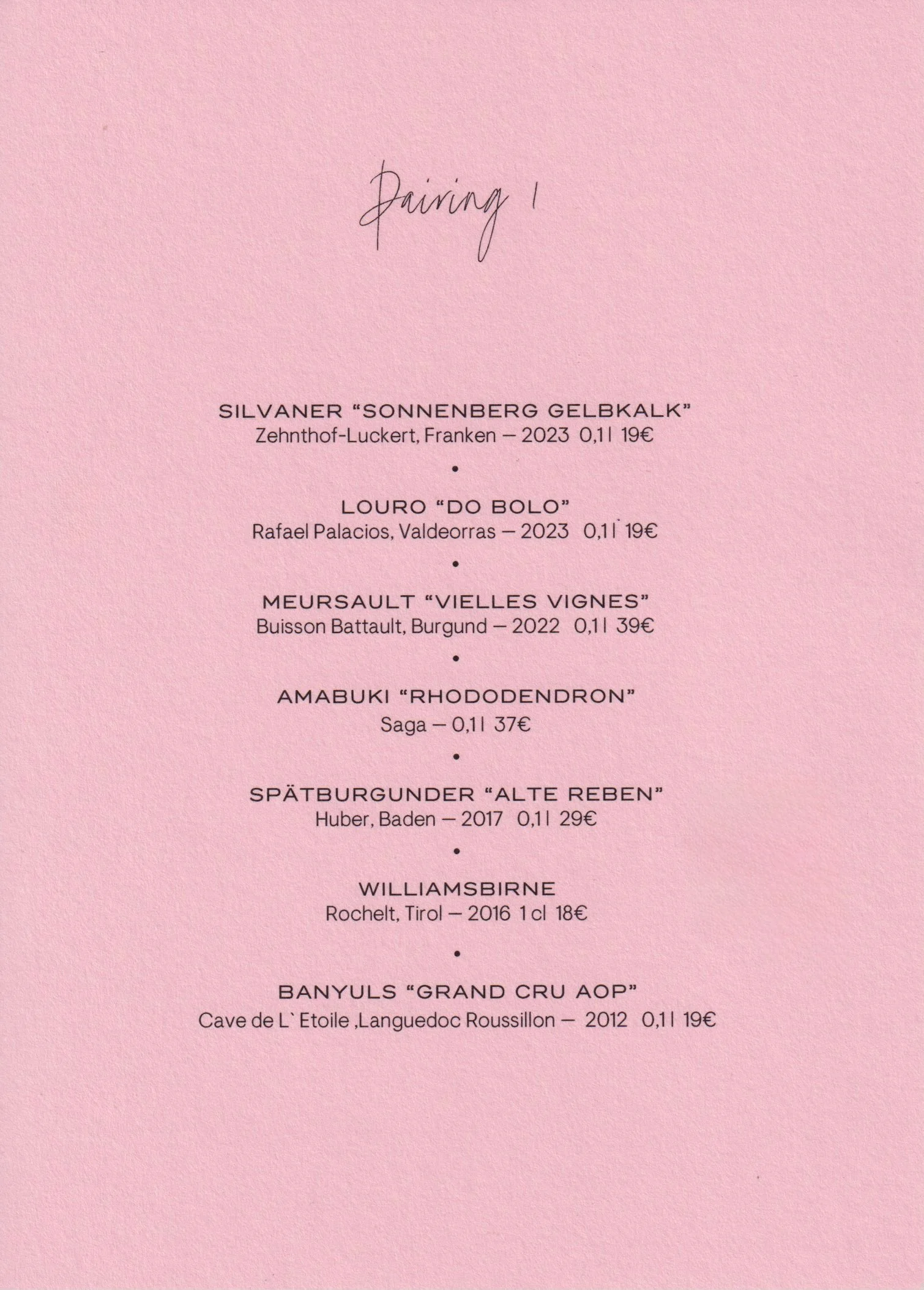Tohru in der Schreiberei - Munich
Rating: 17/20
Where: Munich, Germany
When: Dinner for 2 on 25 June 2025
Cost per Person: Tasting menu 320 Euro, Wine pairing 180-537 Euro
Accolades: 3 Michelin Stars
Why: A unique blend of French, Japanese and Bavarian cuisines
“Tohru in der Schreiberei” is a restaurant named both after its chef Tohru Nakamura and its location. The “Schreiberei” is one of Munich’s oldest buildings and was once the home of the city's notary. The building's historical significance unfortunately dictates much of the restaurant's interior design, from the color scheme (dining rooms in brown and green) to the lack of an AC - the latter thankfully not very noticeable on an unseasonably warm night in late June.
I had been to Tohru less than a year earlier, but in June 2025, it received its third Michelin star - a welcome excuse to return. Just like last time, our visit started with a brief tour of the kitchen. We were introduced to the kitchen team, and learned that only two chefs are actually cooking, while the rest worked on plating the dishes. Not the most common division of labor, I imagine, but possibly the most practical due to the compact size of the kitchen - another “benefit” of the historical building. While in the kitchen, we also witnessed the beginning of the preparation of our first course: a raw (closed) oyster was placed on burning hot coals for about a minute. Apparently, this method lightly cooks the oyster in its own juices, maintaining its flavors in a way that an oven wouldn't.
Speaking of food, Tohru only served a single tasting menu. In the past, getting a pescatarian menu hadn't been a problem, but we didn't ask for any changes this time. There were two wine pairings, both consisting of seven glasses (including one sake) for 180 and 537 Euro, respectively. However, all wines were priced by the glass, so it was entirely possible to create a bespoke wine pairing. The sommelier was highly responsive, offering samples, half-glasses, top-ups and even some great wines that weren’t part of the regular pairing since the restaurant didn't have enough bottles of them. The wines were also almost consistently very good - I had gone for a variant of the pricier pairing, so maybe that was not unexpected. This might be one of those places where it's best to name a wine budget and then let the sommelier take care of the rest. (Note that the wine pairing started only a few courses into the dinner, so an aperitif is not a bad idea.)
Our dinner started with a small cup filled with broth. This was a classic dashi (i.e. kombu and bonito), but boiled again with wagyu beef. This resulted in a nice combination, tastewise a bit closer to a beef bouillon than a dashi 16.
The first “real” course of the night was the previously seen Irish Mór oyster (or at least one looking very similar). It was lightly cooked, and served over a potato puree with some celery and a foam made from white wine and mussels. This dish felt like a union of French cooking (oyster, mussel jus) and Bavarian cuisine (the potato puree). A strongly flavored dish with a lovely sauce that nevertheless maintained a distinct oyster taste - quite an accomplishment 18.
Next came a more Japanese-inspired dish: nori tempura was topped with smoked eel, wagyu roast beef, a mild habanero emulsion and Kyoto leek oil. This was a much more rustic bite than the oyster. The nori was crunchy, the rest of the dish tasted smoky, and the beef's fattiness added some mouthfeel. The eel wasn’t very noticeable apart from its smokiness 18.
The third course was a rice dish. The restaurant uses different varieties of rice depending on the season, and in late June it was Fukkurinko rice from Hokkaido. The rice was seasoned with vinegar made from steamed crustaceans, resulting in a kind of sushi rice. It was served with gamba blanca (shrimp), day lily leaves and a beurre blanc made with the shrimp heads and shio koji. This dish was full of flavor - shrimp flavor, to be precise. Creamy with a nicely cooked, fluffy rice. Lovely 19.
Burrata had been laced with a pistachio cream and came with three preparations of zucchini: raw (wrapped around the burrata), as a mousse and in a vinaigrette that also contained shiso and kefir. Caviar and pistachios were stacked on top of the cheese. A little slice of rye bread was served on the side, topped with more zucchini, a sturgeon rillette and Japanese herb butter. The burrata was creamy (as expected), and served at room temperature. The flavors were overall pretty light: maybe not surprising for the burrata, but slightly so for the vinaigrette. That sauce was also more oily rather than acidic. The pistachios added a bit of texture (for this part of the dish, a 17 or 18). The rye bread had a chewy texture, lightly creamy toppings, and the rillette added a light fish flavor (maybe 16). This “bread course” owed more to Bavarian cuisine than to French cuisine - an elevated “Brotzeit” with creamy cheese and rye bread 17. (As a side note, this dish also marked the beginning of the wine pairing.)
Back to Japan: a sashimi dish of chopped otoro tuna topped with sliced hamachi. There was some wasabi from Nagano, caper leaves, little cucumber flowers and a dashi made with a three-year-old soy sauce. The dashi was served in jelly form - lightly acidic with an interesting aftertaste. Unfortunately, the dish’s acidity was so light that it wasn't very noticeable when everything was eaten together. The same was true for the wasabi, so that this ended up tasting of raw fish with creamy sauces. Not bad (and definitely with a very pretty presentation), but some more acidity or spiciness could have given this dish more of a lift 17.
Chawanmushi is a traditional Japanese egg custard. Here, it was served with some trout, a chanterelle mushroom tapenade, nasturtium leaves and trout roe. This dish sounded Japanese at first, but in its details, such as the tapenade, leaned more towards Western cuisine. There was lots of creaminess, from the chawanmushi and, to an extent, the trout, which was cut into surprisingly large pieces. Most of the flavor though came from the trout roe: acidic and seafoody. I wasn't entirely sold on the mushrooms - they didn't feel as central to the dish as the fish. The paired Italian rose wine was an excellent match for the food, though, they brought out new flavors in each other 18.
The final seafood course featured a filet of John Dory that was served with fennel, apricots and a foam made from buttermilk and bay leaves. The fish had a firm consistency, the apricot lent some acidity to the dish, and tempura “leaves” on top added some fattiness. The sauce was relatively light, making this a good, but also somewhat restrained dish 17.
No meal in Bavaria can be complete without a serving of pork. The chin of a Duroc pig had been made into a confit and then fried. It was served with marinated kohlrabi, strips of braised squid, an XO sauce made with mussels, crustaceans and bacon and finally a cream bouillon made with soy milk and shiitake mushrooms. Surf and turf, in a sense. The pork was tender, but light in flavor. The squid was also soft, the kohlrabi slightly acidic. The shiitake mushrooms were among the stronger flavors in this dish. Nice, but not revelatory. A foccaccia bread served on the side was useful for sopping up the rest of the sauce 17.
For the grand (savory) finale, we were served a cured duck that had been cooked on its skin over coals (an echo of the first dish of the night, the oyster). It was served next to a duck-leg-filled raviolo, some kombu, monk's beard (an herb), and a duck jus seasoned with lovage. The duck had a notable layer of fat, as well as a slightly gamey, chewy texture - I'm not a huge fan of duck at the best of times, and this one wasn't about convert me. I preferred the ravioli with its stronger flavored meat filling. Its creamy topping lightened up the dish, and the seaweed under the pasta was very fresh and almost felt like a salad. Presumably, this was a twist on the Bavarian expectation of having salad with dinner, but using the very un-Bavarian seaweed for that purpose 17.
The sweeter part of the dinner had a theme: “shinrin-yoku”. Literally, this Japanese expression means “forest bathing”, or when put more prosaically, “spending mindful time in nature”. All the desserts had some relation to the forest, either in terms of their ingredients, their earthy flavors or their looks.
First, we were served a Castella, a Japanese sponge cake topped with egg whites, fir tips and a miso glaze. On the side came a genmai tea, made from roasted rice. The spongy cake wasn't very sweet and actually slightly acidic. The lightly earthy tea was a good pairing 17.
Next, four smaller bites arrived at the same time. An ice cream bonbon had been made with maiitake mushrooms, dark chocolate, chestnut cream and blueberries marinated in rice vinegar. Quite nice, with a noticeable mushroom taste. Sadly, the ice cream was already slightly melted by the time I ate it (probably my fault for taking too many photos) 17. A cannoli was filled with cream cheese seasoned with blackcurrant wood and mastic (a tree resin): another dish full of savory notes. According to my dining companion, it tasted like a “cold meadow in the fall” 17. A cinnamon mochi had a creamy filling and its taste reminded me of Christmas 17. Finally, the restaurant's take on Pocky sticks used oak flour and walnuts. A crunchy chocolate treat 16.
The final dessert was based on cherries that had been marinated in cherry juice and liquor. They were filled with roasted Piedmontese hazelnuts and topped with an avocado-verbena cream. In addition, the dish contained some creamy chocolate, a black sesame ice cream, a cherry-based sauce, olive oil and vanilla. Putting the hazelnuts in place of the (removed) cherry pits was a cute idea. The cherries were of good quality, the chocolate very tart, and the result was a bit reminiscent of a Black Forest cake (minus the cream) 16.
Overall: Western fine-dining cuisine with Japanese influences is not exactly a rarity these days. What makes Tohru special in that regard is how Japanese, French and Bavarian aspects appear seamlessly in the same dish, tilting the balance sometimes this way and sometimes the other. The more Japanese-leaning dishes were particularly strong, frequently hitting a solid three-star level. The meat dishes weren't quite as compelling for me, but still very good. It was also impressive that there was essentially no repetition of dishes from our meal last year 17.
